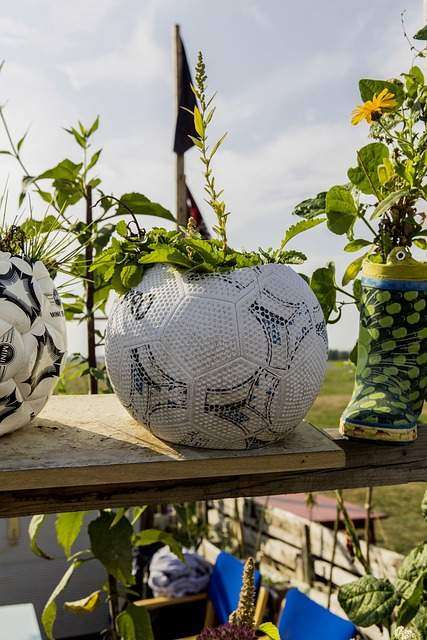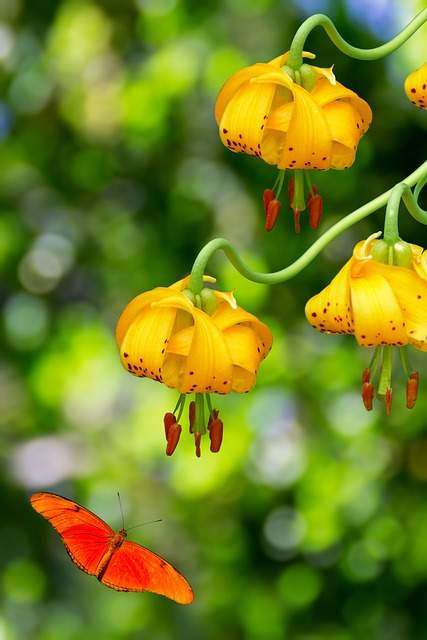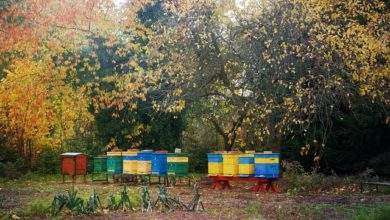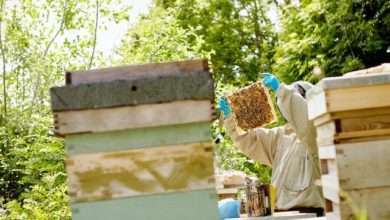How to Prepare a Pollinator Garden

Pollinators are the lifeblood of thriving bee colonies, a fact well-known to beekeepers everywhere.
You can make a difference whether you have a few square feet of balcony space, a yard that needs gardening, or many acres. If you follow this simple step-by-step method, you can create your own pollinator garden and do your part to guarantee the continued existence of pollinators.
Planning your Pollinator Garden
Careful preparation is required to attract the desired number of pollinators to your garden. In order to avoid any potential hiccups once you’ve made your investment, follow these simple guidelines.
Choosing your Location
Flowering plants are adaptable and can thrive in either full sun or partial shade, but keep your target demographic in mind. Some of the most popular wildflowers visited by butterflies and other pollinators thrive in full or partial light and need little in the way of wind protection to flourish.
Identifying Soil Type and Sunlight
Check out your soil to see whether it’s sandier and better able to drain water or if it’s more clay-like and soggy. To find out more about the soil in your area, do a test dig or look at a soil map of your county online. What you can grow depends on factors, including the soil’s composition and the area’s availability of sunlight.
How to Choose the Right Plants
Find out what kinds of milkweed and other wildflowers thrive in your area’s soil and the amount of sunshine. Generally speaking, native plants are hardier and need less care, so they should be your first pick.
Discover a local nursery that focuses on native plants; they will know which species will thrive best in your area. Avoiding plants that have been sprayed with insecticides, pesticides, or neonicotinoids is a must. Selecting perennials is important since they will return year after year without any work on your part.
Keep in mind that there is more to the growing year than simply summer. Nectar is especially important for pollinators in the early spring, all through the warm season and winter. You may have a beautiful, colorful garden that you and the pollinators can enjoy for months by selecting plants with staggered bloom periods.
Plants vs Seeds

Once you know what you’re working with, you may select whether to start with pollinator seeds or little plants. Both are viable choices; selecting one depends on your time and financial constraints. Growing from seed is more cost-effective in the long run, particularly for bigger gardens, but it takes more time.
You should scatter your seeds in the autumn or late winter before your summer growth season if you intend on utilizing them. That way, the seeds may germinate without being rushed.
Plants planted in a nursery are more expensive but bloom earlier in the growing season and attract beneficial insects and birds.
Pollinator Garden Planting
You’ll need your seeds or plants and gardening equipment to prepare the soil, more soil or compost, and mulch to get started planting.
Preparing your Garden for Pollinators
Grass and other plant cover must be removed, and the soil turned to loosen it if you’re starting with an existing lawn. There are several ready-made alternatives for raised beds and containers and straightforward plans for constructing your own.
Your garden’s success may be enhanced by the addition of compost or nutrient-rich soil, regardless of where you choose to plant it.
Planting Your Seeds or Plants
To ensure successful seed germination, plant seeds in the autumn and cover them with dirt in late winter. Spread seeds on the snow in the late winter. The seeds’ heat from the sun will help them get firmly planted in the snow. We can thank melting snow for assisting seed germination.
It’s important to wait until the last chance of frost has passed if you’re beginning with young plants. Make holes narrow enough for the roots to spread out, then fill them in with dirt or compost to protect and strengthen them. Mulch may help suppress unwanted plant development, such as weeds.
Patiently Wait, Observe, Water, and Weed
Pollinators like butterflies will appreciate your garden in due time. Keeping your garden healthy requires regular weeding and watering. Remember that milkweed could take a few growing seasons before it starts blooming.
We wish you the best of success with your pollinator garden. If you’ve helped butterflies, bees, or other pollinators, you have my sincerest gratitude.
FAQ
To attract pollinators, what should a garden contain?
- Get plants that are already established in your area.
- Choose a wide variety of colorful flowers of different sizes and shapes to provide a wide range of nectar and pollen.
- Stay away from crossbreeds created in this century…
- Exhibit a wide range of flowering plant species from spring through October…
- Do not use mulch or landscaping cloth.
When should you establish a pollinator garden?
- To ensure successful seed germination, plant seeds in the autumn and cover them with dirt in late winter. Spread seeds all around the stage in the dead of winter. The seeds’ heat from the sun will help them get firmly planted in the snow.
What are common plants that bees pollinate?
- Apples, cranberries, melons, almonds, and broccoli are crops that rely on bees for pollination. In fact, honey bees are necessary for the pollination of almonds while they are in bloom, and their importance increases to 90% when pollinating fruits like blueberries and cherries.

What plants should I plant for a pollinator garden?
- Stonecrop (Sedum)
- Milkweed (Asclepias)
- Coneflower (Echinacea)
- Goldenrod (Solidago)
- Location: Cape Fuchsia
- Yarrow (Achilles)
- Bluebeard (Caryopteris)
What distinguishes a pollinator garden from a butterfly garden, if any?
- When you plant for butterflies, you’re also helping other species of plants by doing so (and every pollinator garden is a butterfly garden.) The reason being many of the same flowers that attract butterflies also attract hummingbirds, bees, and other helpful pollinators.
What is the most prolific pollinator?
- Most people think of bees when they think about pollinators, and many of the world’s crops rely on them.
What are 3 ways plants attract pollinators?
- Many strategies have developed in plants to lure in pollinators. Visual signals, fragrance, food, imitation, and trapping are all part of this arsenal.
How much upkeep do pollinator gardens require?
- They help develop habitats for animals and pollinators. Both the expense and upkeep of these options are minimal. They are more capable of absorbing carbon dioxide from the air and storing it than even the most well-kept grass. Moreover, they are stunning all year round.
Which flower does the honeybee prefer?
- Bees love a wide variety of flowers, but some of their favorites are bee balm, echinacea, snapdragons, and hostas. Did you know that bees have great color vision? This is why you’ll see so many of them at yellow, purple, blue, and white blooms.
How close does a pollinator tree need to be?
- A fruit tree in need of a pollinator should be planted in close proximity to a suitable flowering plant. Distances of up to 100 feet are recommended while being physically closer is preferred. If there is more space between trees, pollinating bees are less likely to make round trips.
How much space does one need for a pollinator garden?
- Nevertheless, only some city dwellers have access to even half of the acreage recommended by the Natural Resources Conservation Service for beneficial insectaria and habitat. They also propose planting areas of 25 square feet with a single species.
Which pollinator is most efficient?
- Of all pollinators, bees are the most effective, with a single bee colony capable of pollinating three million flowers per day. Reproduction is essential for plant life, as it is for all life.
What is the biggest threat to pollinators?
- When invasive plants outnumber native ones, pollinators have less access to food and fewer places to hide. Insects that aren’t native to an area might transfer diseases such as mites, fungi, and bacteria to the local flora and fauna. Poor diet and pesticide exposure are two additional stresses that may exacerbate the severity of sickness.
When it comes to pollination, which species is more effective, bees or butterflies?
- Although butterflies are more prolific visitors, bees are superior pollinators due to their specially adapted mouthparts, allowing them to remove and deposit pollen more efficiently. There are a number of things that may influence pollination.
What colors are best for pollinator garden?
- Colors like orange, red, yellow, pink and purple, among others, draw them in. There are many species of pollinators because flowers come in a wide range of sizes, shapes, colors, and aromas.

Do marigolds attract bees?
- If you plant a kind of marigold with a hollow core, the insects will have no trouble locating the bright yellow flowers, making them ideal for attracting pollinators. Many gardeners favor French marigolds because of their lengthy flowering time, however little ‘Gem’ marigolds also meet this criteria.
Is there a kind of flower that bees avoid?
- Certain plants, such as geraniums, roses, dahlias, yews, and bougainvillea, are known to deter bees. Oils and essential oils produced by these plants have an odor that is offensive to bees and effectively keeps them at bay.
What is killing our pollinators?
- Pesticides are used to eradicate insects, illnesses, and weeds in both urban and rural settings. Unfortunately, pollinators and other important insects may be harmed by many pesticides.




